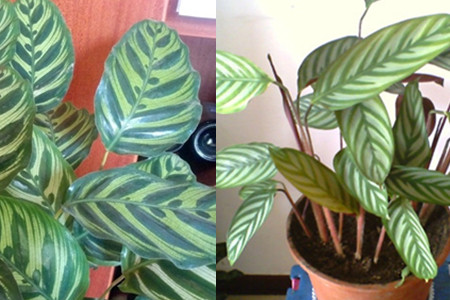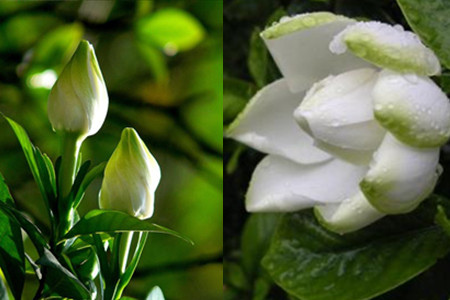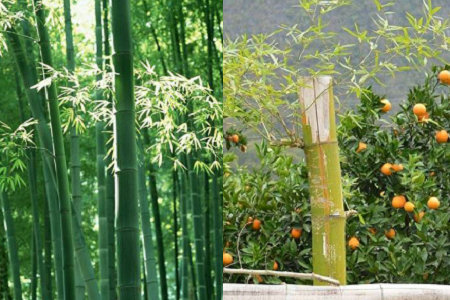The purple back bamboo taro leaf hair Huang Da person teaches you the correct handling method

Among the dazzling array of plants in the flower market, there is a kind of plant that is particularly conspicuous. Its leaves are large and feel like leather. The color of the leaves is also very strange. The front is yellow and green, while the other side is very dark purple. Very strange. Many friends like to plant one or two pots of this plant in their home or company, because it is relatively easy to raise, coupled with its unique appearance, it is very popular and popular, it is purple-backed taro.
This is a very common plant, because its price is not very high, so it sells very well in the market. However, this kind of plant often encounters a disease, that is, its leaves will turn yellow. How should this problem be solved?
1. Move it to the shade
Unlike most plants, this plant does not like sunlight very much. on the contrary, its leaves turn yellow easily if it is exposed to violent sunlight for a long time. Therefore, once friends find that the leaves of the plant begin to change color, they should move it to a place where there is no sun.
2. Ventilation
In addition to sunlight, if the plant is in a closed environment, its leaves will also turn yellow, because such an environment is not very ventilated, which is very unsuitable for growing this kind of plant. Therefore, friends should put it in a ventilated place so that its leaves will not turn yellow.
3. Water supply
When friends find that the leaves of the plant have slowly begun to turn yellow, they should reflect on whether they have a correct way of water supply, because lack of water for a long time will lead to the problem of yellowing leaves, so friends must supply it with enough water.
In short, the problem of leaf yellowing is not insurmountable.
The reason and solution of the curling of the leaves of Amorphophallus angustifolia how to deal with the yellowing of the leaves
The phenomenon of curling leaves and yellowing of leaves is caused by some links in the growth process of purple-backed taro and the conflict between the environment and the growth habits of purple-backed taro. If you want plants to grow well, you need to get along well with the environment. Therefore, we need to find the reason from the growth environment of purple back taro.
The reason and solution of curling leaves of Amorphophallus angustifolia
1. The light is too strong
As we all know, purple back taro can only grow normally in a semi-overcast environment, so it is usually only necessary for it to be placed in a bright indoor place to receive some astigmatism to meet the demand for light. If the light is too strong, especially the strong light directly on the plant, it is easy to cause leaf curl phenomenon, a little more strict focus will appear focal edge and yellow leaf phenomenon.
Therefore, in the process of maintenance and management, we must find a place where the plant can be sheltered from direct sunlight, and it is recommended to put it indoors, such as living room, study, or even near the windowsill. In short, it is an environment that cannot be directly exposed to the sun.
2. Lack of moisture
Because the purple back taro is not tolerant to drought and has a large demand for water, if the basin soil is dry and the air is dry for a long time, it is easy to cause the plant to curl leaves due to lack of water. Therefore, we need to provide sufficient water for the plant from two aspects of soil moisture and air humidity in order to promote its healthy growth.
In terms of basin soil, it is suggested that the soil should be kept moist and watered in a timely and timely manner to ensure the water supply needed by the plant; in terms of air humidity, it should be carried out by frequently spraying foliar water. At the same time, you can also spray water to the ground around the plant to improve air humidity.
Only when we have done enough work on lighting and watering, the plant will not cause leaf curl, withered yellow, scorched edge and other phenomena caused by improper lighting or watering, so as to keep the plant growing normally.
What if the leaves of purple back bamboo taro turn yellow?
1. Illumination of the reasons for the yellowing of the leaves of Amorphophallus sinensis.
Purple-backed bamboo taro is a kind of shade-loving plant, and the scattered light is the best for it. In the maintenance of purple-backed bamboo taro, it is necessary to avoid direct sunlight, and do not put purple-backed bamboo taro in direct sunlight, because this will lead to sunburn, but the color of the leaves will fade, lose luster and turn yellow gradually.
2. The reason for the yellowing of the leaves of Amorphophallus sinensis is poor ventilation.
Purple back taro likes shade, it is better to put it in a cool place with less sun, but it can not be put in a poorly ventilated and dark place for a long time, which will also cause the leaves of purple back bamboo taro to turn yellow or even fall off.
3. The reason for the yellowing of the leaves of Amorphophallus angustifolia
Lack of water can also lead to yellowing of purple-backed taro leaves. When the purple-backed taro is short of water, the basin soil will be dry and can not meet the growth needs of the purple-backed taro. In daily life, the need for reasonable moisture control, regular watering, basin soil dry should be watered, watering must be thoroughly, to keep the basin soil moist, rather wet than dry.
4. the low temperature of the yellowing of the leaves of Amorphophallus angustifolia
Purple-backed taro is a cold-resistant plant, which needs to keep the temperature of growth above 12 degrees in winter. When the temperature is too low, it will have an adverse effect on the growth of purple back taro, which may produce frost damage. Freezing injury will lead to yellowing of purple-backed taro leaves. It is necessary to take safe measures for the purple back taro to survive the winter to ensure the suitable growth temperature.
5. Diseases and insect pests caused by yellowing of leaves of Amorphophallus purpurea
Diseases and insect pests are a major obstacle to plant growth. When the purple back taro occurs the invasion of diseases and insect pests, it will lead to a variety of problems. For example, purple-backed taro has leaf spot disease and leaf blight, which are diseases that affect the leaves, which will make the leaves of purple-backed taro grow speckled, withered and even fall off, and seriously harm the whole plant. It can be treated with drugs.
What are the common diseases and insect pests of purple back taro?
The common diseases and insect pests of purple back taro are white silk disease, leaf spot, shell insect, red spider and so on.
Growth habits of Amorphophallus sinensis
Purple-backed taro likes a warm, humid and shady environment. The suitable temperature for growth is 20-30 ℃, it needs more water, and it is not resistant to drought, heat and cold. It can survive the winter safely above 5 ℃. Purple back taro is afraid of frost and likes acid soil that is loose, fertile, moist and well drained.
In addition to the phenomenon of yellowing and curling leaves, the pest of purple-backed taro is also a major threat to the growth of purple-backed taro. Therefore, in the daily maintenance process of purple-backed taro, it is necessary for us to monitor the growth status of purple-backed taro, so that it can grow better.
The leaves of purple back bamboo taro are yellowing.
Light on the reasons for the yellowing of the leaves of Amorphophallus
Purple-backed bamboo taro is a kind of shade-loving plant, and the scattered light is the best for it. In the maintenance of purple-backed bamboo taro, it is necessary to avoid direct sunlight, and do not put purple-backed bamboo taro in direct sunlight, because this will lead to sunburn, but the color of the leaves will fade, lose luster and turn yellow gradually.
Poor ventilation for the yellowing of leaves of Amorphophallus morifolium
Purple back taro likes shade, it is better to put it in a cool place with less sun, but it can not be put in a poorly ventilated and dark place for a long time, which will also cause the leaves of purple back bamboo taro to turn yellow or even fall off.
Lack of water for the yellowing of leaves of Amorphophallus morifolium
Lack of water can also lead to yellowing of purple-backed taro leaves. When the purple-backed taro is short of water, the basin soil will be dry and can not meet the growth needs of the purple-backed taro. In daily life, the need for reasonable moisture control, regular watering, basin soil dry should be watered, watering must be thoroughly, to keep the basin soil moist, rather wet than dry.
Low temperature caused by yellowing of leaves of Amorphophallus angustifolia
Purple-backed taro is a cold-resistant plant, which needs to keep the temperature of growth above 12 degrees in winter. When the temperature is too low, it will have an adverse effect on the growth of purple back taro, which may produce frost damage. Freezing injury will lead to yellowing of purple-backed taro leaves. It is necessary to take safe measures for the purple back taro to survive the winter to ensure the suitable growth temperature.
Diseases and insect pests caused by the yellowing of leaves of Amorphophallus
Diseases and insect pests are a major obstacle to plant growth. When the purple back taro occurs the invasion of diseases and insect pests, it will lead to a variety of problems. For example, purple-backed taro has leaf spot disease and leaf blight, which are diseases that affect the leaves, which will make the leaves of purple-backed taro grow speckled, withered and even fall off, and seriously harm the whole plant. It can be treated with drugs.
- Prev

What is the cure for the yellowing of gardenia leaves?
Many flower friends love and hate gardenia, why do you say so? Because gardenia looks good, but it is difficult to raise. Yellowing of gardenia leaves is a common problem in the process of growing flowers. The editor will teach you how to solve this problem.
- Next

What are the planting methods of chopped bamboo that can live without roots?
Bamboo gives people a sense of serenity, so many people like to use bamboo for environmental decoration. Although the vitality of bamboo is tenacious, it is also easy to take care of. But how should bamboo be planted? Can the bamboo that has been cut into segments survive without roots?
Related
- Fuxing push coffee new agricultural production and marketing class: lack of small-scale processing plants
- Jujube rice field leisure farm deep ploughing Yilan for five years to create a space for organic food and play
- Nongyu Farm-A trial of organic papaya for brave women with advanced technology
- Four points for attention in the prevention and control of diseases and insect pests of edible fungi
- How to add nutrient solution to Edible Fungi
- Is there any good way to control edible fungus mites?
- Open Inoculation Technology of Edible Fungi
- Is there any clever way to use fertilizer for edible fungus in winter?
- What agents are used to kill the pathogens of edible fungi in the mushroom shed?
- Rapid drying of Edible Fungi

